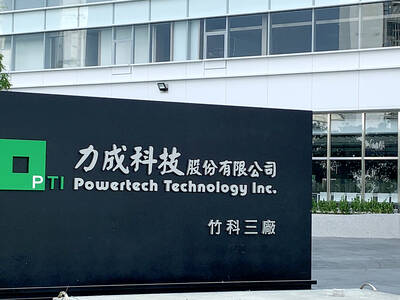MediaTek Inc (聯發科), one of Taiwan’s leading integrated circuit (IC) designers, has secured orders to provide Indian smartphone vendor Micromax with its first-quad core smartphone chip.
Micromax, the third-largest smartphone maker in India, will use the MediaTek chip in the production of its A116 Canvas HD smartphone, scheduled to hit the Indian market early next month, which is equipped with Google’s Andrioid 4.1 Jelly Bean operating system and an 8 megapixel camera.
The Taiwanese firm unveiled the quad-core smartphone platform on Dec. 11 last year. The company said Micromax is its first customer for the product, which is able to deliver premium multimedia capabilities and boasts low power consumption.
Taiwan-based Acer Inc, the world’s fourth-largest personal computer vendor, said it will use MediaTek’s quad-core chips for production of both its 8-inch and 10-inch tablet computers which will hit the market in the fourth quarter of this year.
Meanwhile, in the wake of the slow-season effects of the first quarter, Nomura Securities said it expects MediaTek’s consolidated sales for the three-month period to fall 8 percent to 14 percent from the previous quarter.
In the fourth quarter, the IC designer posted NT$26.73 billion (US$903 million) in consolidated sales, down 9.28 percent from the third quarter.
MediaTek’s sales for this month are expected to rise more than 10 percent from the NT$7.58 billion reached in December last year, on the back of an increase in its smartphone chip shipments, Nomura Securities said

Taiwan Semiconductor Manufacturing Co (TSMC, 台積電) has secured three construction permits for its plan to build a state-of-the-art A14 wafer fab in Taichung, and is likely to start construction soon, the Central Taiwan Science Park Bureau said yesterday. Speaking with CNA, Wang Chun-chieh (王俊傑), deputy director general of the science park bureau, said the world’s largest contract chipmaker has received three construction permits — one to build a fab to roll out sophisticated chips, another to build a central utility plant to provide water and electricity for the facility and the other to build three office buildings. With the three permits, TSMC

The DBS Foundation yesterday announced the launch of two flagship programs, “Silver Motion” and “Happier Caregiver, Healthier Seniors,” in partnership with CCILU Ltd, Hondao Senior Citizens’ Welfare Foundation and the Garden of Hope Foundation to help Taiwan face the challenges of a rapidly aging population. The foundation said it would invest S$4.91 million (US$3.8 million) over three years to foster inclusion and resilience in an aging society. “Aging may bring challenges, but it also brings opportunities. With many Asian markets rapidly becoming super-aged, the DBS Foundation is working with a regional ecosystem of like-minded partners across the private, public and people sectors

RUN IT BACK: A succesful first project working with hyperscalers to design chips encouraged MediaTek to start a second project, aiming to hit stride in 2028 MediaTek Inc (聯發科), the world’s biggest smartphone chip supplier, yesterday said it is engaging a second hyperscaler to help design artificial intelligence (AI) accelerators used in data centers following a similar project expected to generate revenue streams soon. The first AI accelerator project is to bring in US$1 billion revenue next year and several billion US dollars more in 2027, MediaTek chief executive officer Rick Tsai (蔡力行) told a virtual investor conference yesterday. The second AI accelerator project is expected to contribute to revenue beginning in 2028, Tsai said. MediaTek yesterday raised its revenue forecast for the global AI accelerator used

BREAKTHROUGH TECH: Powertech expects its fan-out PLP system to become mainstream, saying it can offer three-times greater production throughput Chip packaging service provider Powertech Technology Inc (力成科技) plans to more than double its capital expenditures next year to more than NT$40 billion (US$1.31 billion) as demand for its new panel-level packaging (PLP) technology, primarily used in chips for artificial intelligence (AI) applications, has greatly exceeded what it can supply. A significant portion of the budget, about US$1 billion, would be earmarked for fan-out PLP technology, Powertech told investors yesterday. Its heavy investment in fan-out PLP technology over the past 10 years is expected to bear fruit in 2027 after the technology enters volume production, it said, adding that the tech would